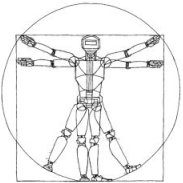Robotics: Science and Systems VI
The Smooth Curvature Flexure Model: An Accurate, Low-Dimensional Approach for Robot Analysis
L. Odhner and A. DollarAbstract:
This paper presents a new and comprehensive method of modeling robots having highly flexible members such as flexure joints. An accurate model of large deformation bending is important for precisely describing the configuration of the flexible member. Additionally, the accuracy of the Jacobian and Hessian of the forward kinematics are critically important at large angles for predicting the deformation and the stiffness of the joint under load. The model introduced here is based on the assumption that the curvature of a beam in bending is smooth, and thus can be approximated by low-order, orthogonal polynomials. This produces a parameterized description of flexure motion that can be used as a joint model when expressed in Denavit-Hartenberg form, as a transformation from one rigid link to the next in a serial manipulator. We will show that with only three parameters, this model faithfully reproduces the elastic deformation of a flexure hinge predicted by the continuum model, even for large angles, without requiring numerical integration or many finite elements. It can also be used to compute the compressive buckling load of the flexure as predicted by the continuum model.
Bibtex:
@INPROCEEDINGS{ Odhner-RSS-10,
AUTHOR = {L. Odhner AND A. Dollar},
TITLE = {The Smooth Curvature Flexure Model: An Accurate, Low-Dimensional Approach for Robot Analysis},
BOOKTITLE = {Proceedings of Robotics: Science and Systems},
YEAR = {2010},
ADDRESS = {Zaragoza, Spain},
MONTH = {June},
DOI = {10.15607/RSS.2010.VI.018}
}
